The Creativity of Digital Natives Who Learned "Learning Power" Will Change the World ~ CANVAS Chairperson Nanako Ishido

Nanako Ishido
CANVAS

The generation that has grown up familiar with digital technology and the internet since childhood is called "digital natives." They are greatly anticipated as a generation possessing entirely different perspectives, ideas, and possibilities compared to previous generations. However, on the other hand, there are certainly many experts who point out that digital technology can also bring harmful effects to child-rearing and education. What do today's children—who can truly be called "digital natives" since they've been exposed to smartphones and tablets from birth—feel, learn, and aspire to within this environment? We spoke with Nanako Ishido, who continues diverse and unique activities centered on the theme of children's relationship with digital technology.
(Interviewer: Yuzo Ono, Planning Promotion Department Manager, Dentsu Digital Inc. Business Bureau)
Using the power of digital and technology to transform schools and learning itself
──What led you to focus on the theme of children and education?
Ishido: I like children, but more than that, I was interested in new forms of expression and communication. And I thought that creating these things should be the role of the next generation—the digital natives.
A major catalyst was my encounter with the MIT Media Lab. Beyond the research itself, witnessing firsthand how they created a "space" where something new could emerge was profoundly impactful. World-class experts and digital companies debated day and night, and the utmost praise was given to challenges aimed at creating new value. One of the Media Lab's core research themes was "Children and Media." Underlying this was the belief that developing countries and children stand to benefit most from digital advancements. Just as the Media Lab provides a space for creating the future of technology, I came to believe that preparing spaces and tools for children is the role of today's adults. That's what prompted me to start my current initiative.
──Within that initiative, you're actually focusing on integrating digital technology into education, right?
Ishido: Personally, I use the term "children's learning" rather than "education." A Duke University professor's prediction that 65% of current jobs will disappear by the time today's children become adults made headlines. The skills children need to thrive in the digital age are changing dramatically. At the very least, the advantage of memorizing knowledge is diminishing in an environment where diverse information is instantly accessible through search. What's common sense today may be nonsense in ten years. For children to navigate this era of unprecedented change, what becomes crucial is the creative and communicative power to generate new value through collaboration with diverse global perspectives – the ability to create.
As the skills children need change, it naturally follows that the methods of learning must also evolve. However, Seymour Papert of the MIT Media Lab noted that while bringing a surgeon from 150 years ago into a modern operating room would be utterly useless, placing a teacher from 150 years ago in today's classroom could still teach effectively – teaching methods have changed so little. Japan faces the same situation. When transitioning from the Edo to Meiji era, education shifted from private tutoring (terakoya) to mass classroom instruction, and for roughly 150 years since, the form has remained entirely unchanged.
CANVAS was launched in 2002. Amidst a climate where there was momentum but difficulty integrating technology-based creative activities into schools, we started it as an extracurricular activity promoted through industry-government-academia collaboration, believing this was a role society as a whole should shoulder. We feel that to transform learning, the most crucial starting point is indeed bringing the power of technology and digital tools into the school environment itself.
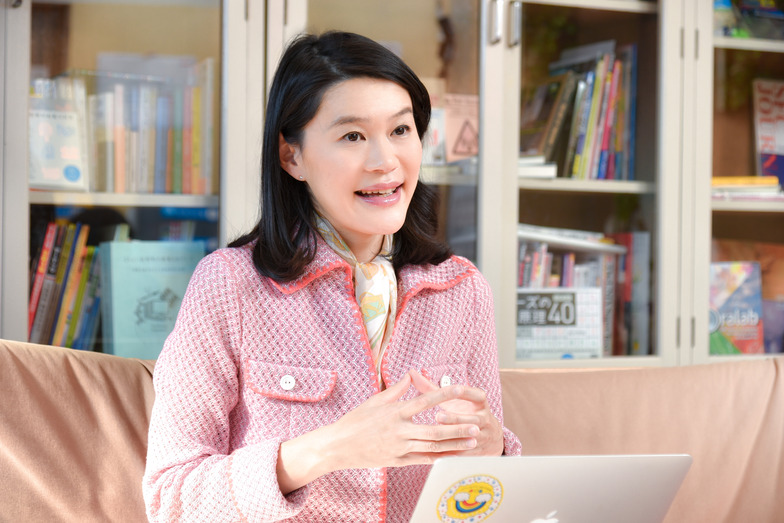
──What impact does incorporating digital technology have on learning?
Ishido: There are three main benefits. First, it enables fun and creative learning. Subjects like astronomy or geometry, which were previously difficult to teach, can now be made understandable and enjoyable through videos or game-like elements. Furthermore, children can express what they've learned.
Second, it enables sharing. Previously, only students who raised their hands could speak, but through tablets, teachers can now grasp everyone's opinions. Students can also teach and learn from each other. Furthermore, it allows real communication with people worldwide and connects them with their homes and communities.
Third is efficiency. By accumulating big data, we can provide personalized learning tailored to each individual. Automating grading also frees up teachers' time to engage directly with students.
We refer to these as the three benefits: creation, sharing, and efficiency. Personally, I am most hopeful about the creation aspect. Creativity is what children need most to thrive in the future. The greatest value of using digital tools is, I believe, the ability to create. Everyone can produce something new, become a creator of information, and a disseminator. I hope they will maximize this potential.
Children who learn how to learn will be stronger than those who merely learn knowledge and skills.
──You mentioned over 350,000 participants in your workshops so far. What kind of tangible results have you observed?
Ishido: For example, at summer camps, we form teams of 4-5 kids who create films or music entirely on their own. They become so engrossed they say even break time or lunch time is a waste. When we first started, people around us said, "That's 'yutori' education," but I respond, "It's the essence of cramming education." After all, is there any other class where they demonstrate such intense concentration?
And afterward, the most common feedback from parents is that their child's attitude toward daily life has improved. Teaming up with someone they've just met to complete something is a "success experience" that gives them a huge sense of accomplishment. That accumulation builds their confidence and fosters a proactive, positive attitude. So many kids start raising their hands in class, wake up on their own, have more conversations at home, or become eager to study.
This is crucial. In today's rapidly changing world, what children need most is the ability to keep learning throughout their lives. Children who have "learned how to learn" are the strongest. That's why we don't focus on teaching specific skills. Our greatest achievement is helping children truly feel that learning is fun and teaching them how to learn.
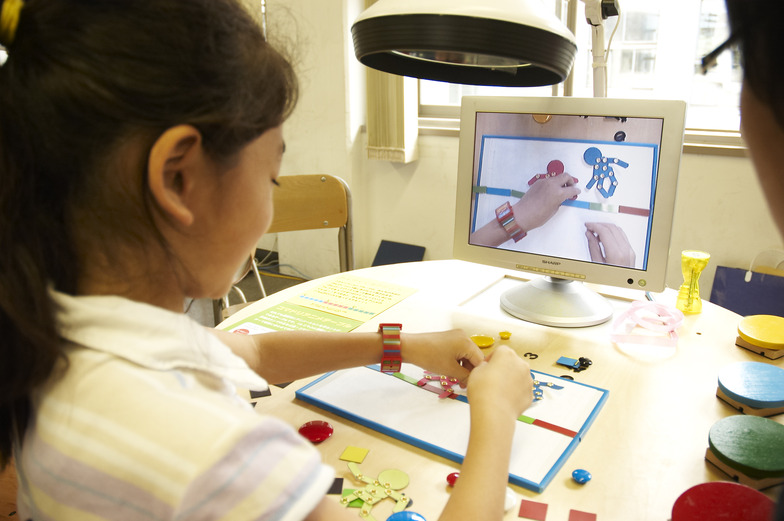
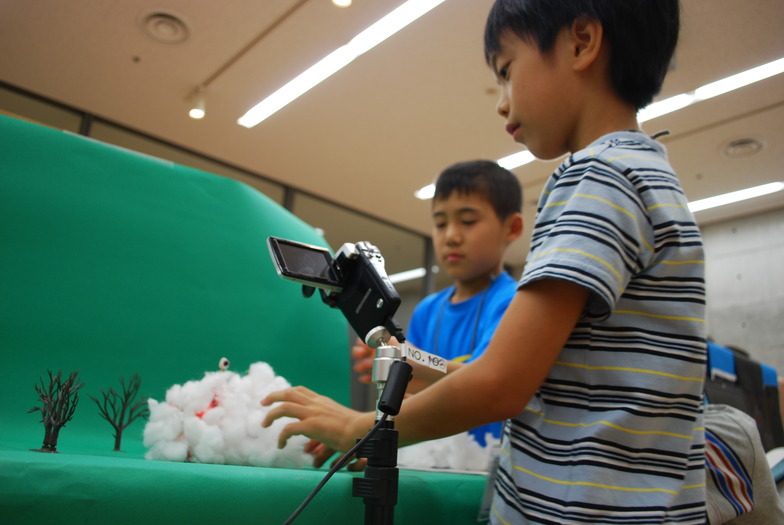
──So, does the digital medium play a major role in helping children transform into these proactive individuals?
Ishido: For instance, camping together in nature also builds confidence; it's not something only digital can do. However, a major strength of digital tools is that they lower the barrier to output. You can design even if you're not good at drawing, or write lyrics and compose music without specific skills. Furthermore, by thinking collaboratively from the start, possibilities expand infinitely. It greatly broadens what you feel like trying or want to do.
Still, a sense of balance is crucial. That's why we run workshops: to challenge participants to experience both worlds—real and virtual, digital and analog—within that balance, fuse them together, and discover new value. But going forward, as objects start connecting to the internet, that boundary might become blurred.
──Problems arising from children's use of the internet and digital technology, such as so-called "cyberbullying," are frequently pointed out. How do you view this?
Ishido: It's true there are negative aspects, and I feel the challenge lies in society's immature approach to addressing them. What we can do now is focus on literacy education. Just as we teach traffic rules, we must communicate the rules that must be followed. Rather than hiding scary things, I believe it's the responsibility of adults to teach proper usage while children are young enough for parents and teachers to intervene. It's vital for adults and children to work together – parents and children at home, teachers and students at school – to establish rules and their reasons, and to maintain an attitude of adhering to them.
It's true that some people still say children shouldn't have mobile devices. But often, those who oppose it are people who haven't used them much themselves. Ultimately, it's just one tool; it depends on how it's used. For today's children, it's simply that they were born with crayons, paper, tablets, and smartphones available. Running around and playing in the park, or using their five senses to create something – all of these are important. It's all about balance.
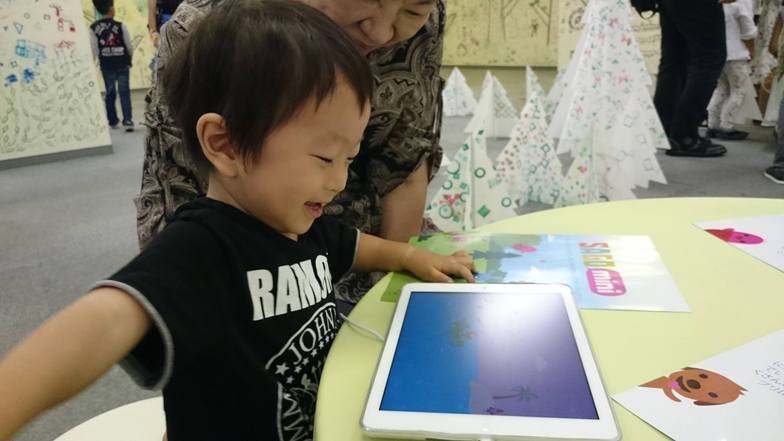
──Do you notice any distinctive characteristics among the digital native generation?
Ishido: I feel Japanese children, in particular, excel at visual expression through manga, anime, and such. While our current culture centers on textual expression, I sense the next generation's culture will fundamentally be one of visual communication. At that time, the potential held by Japanese children could be enormous.
Their approach to content is also changing. For example, if they like music, kids used to trace their favorite artist's lineage to see who influenced them. But today's kids have too much information, so they listen in a zapping-like way. Their mindset is completely different. We'll see entirely new lifestyles emerge, and when you consider the further penetration of IoT and artificial intelligence, it's hard to even imagine.
Even so, the digital native generation is truly remarkable. They intuitively understand that technology can infinitely expand their capabilities. We're seeing many kids start things like mastering IT in middle or high school, recruiting friends online to start businesses, or finding kids who love programming and trying to build cloud services. If 65% of jobs will disappear, we need to create a new 65%. I have tremendous hope that this generation of kids, who truly embody and master new technology, will create new jobs, new forms of expression, and new lifestyles.
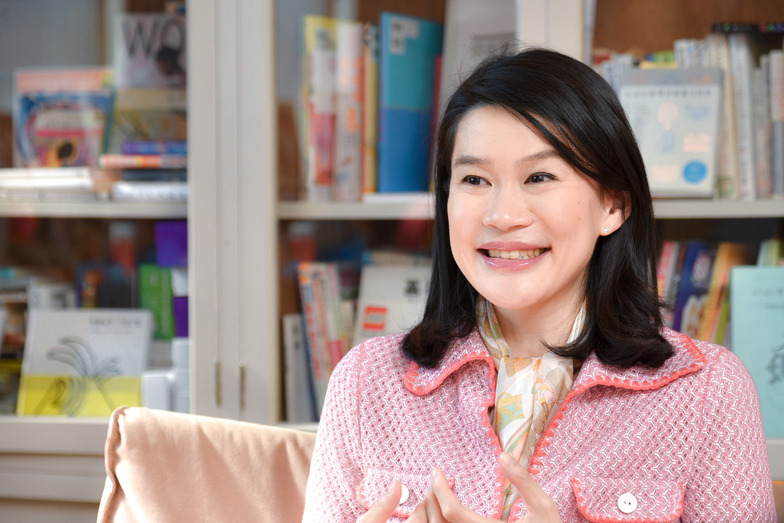
I want to imagine and shape the future 30 years from now together with these children.
──If the nature of children and education changes like this, the role of school teachers will likely change too, won't it?
Ishido: School lessons will no longer be about transmitting knowledge stored in the teacher's head to students. Knowledge is available online. What becomes more important is how to use it to discuss, deepen understanding, communicate with others based on that, and create something. I believe teachers of the future will become facilitators for creating and discussing, and schools must become places for that. Simultaneously, learning will no longer be confined solely to schools. Numerous learning environments will emerge outside of school, seamlessly connecting with activities at home and in the community. This shift will enable children to engage in truly self-directed, collaborative, and creative learning.
Japan has maintained such high educational standards solely due to the excellence, dedication, and passion of its teachers. While teachers' lack of IT proficiency is often cited as an issue, data shows that once they actually get their hands on the tools, they are fully capable of using them effectively. It's a chicken-and-egg debate. Just as holding a pencil doesn't make one smarter, having a tablet doesn't automatically improve grades. The key lies in how lessons are conducted. Japan's teachers are truly excellent and dedicated; given the tools, I believe they can create lessons worthy of the 21st century that we can be proud of globally. It's widely observed in various settings that the very teachers capable of delivering truly excellent, substantive lessons are also the ones who master ICT effectively.
──Some experts point out that teaching children programming is crucial for future education. Do you agree?
Ishido: We've been advocating for programming education since our founding 14 years ago, and only in the last two years or so has a movement begun to take shape. This shift is likely influenced by the Japanese government's growth strategy highlighting the need for programming from elementary and secondary education, along with movements in other countries making it mandatory. It's also starting to rank in extracurricular activity rankings, finally gaining acceptance among parents.
We don't want children to learn programming "as" a subject; we want them to learn "through" programming. We want them to acquire the ability to think logically and solve problems, the ability to collaborate with others to create new value, and above all, to master a new means of expression. Computers are permeating beyond personal computers, integrating into all things, fields, and environments. For children, computers and the internet are present whether they're cooking rice, doing laundry, or watching TV. Computers will underpin all aspects of life, culture, society, and the economy, and all these systems are born from programming. That's precisely why having a fundamental understanding of computers will change one's ability to navigate every situation in society. What children need going forward is "reading, writing, and programming." I believe this will become essential foundational literacy, no matter what kind of life they lead.
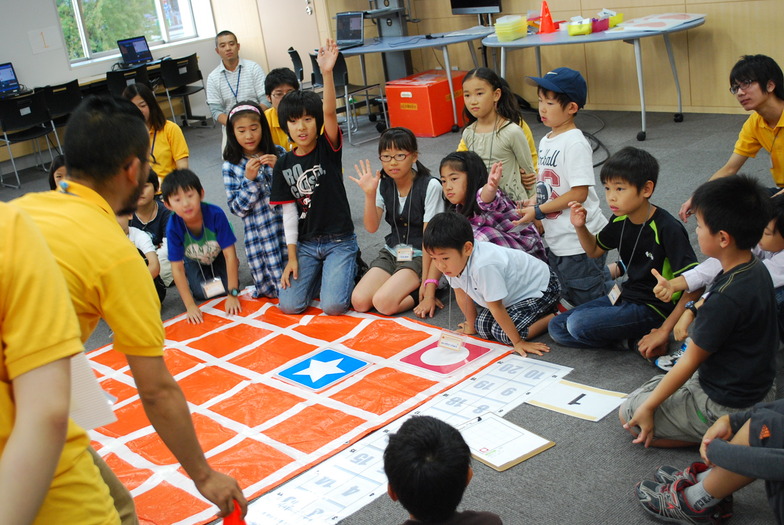
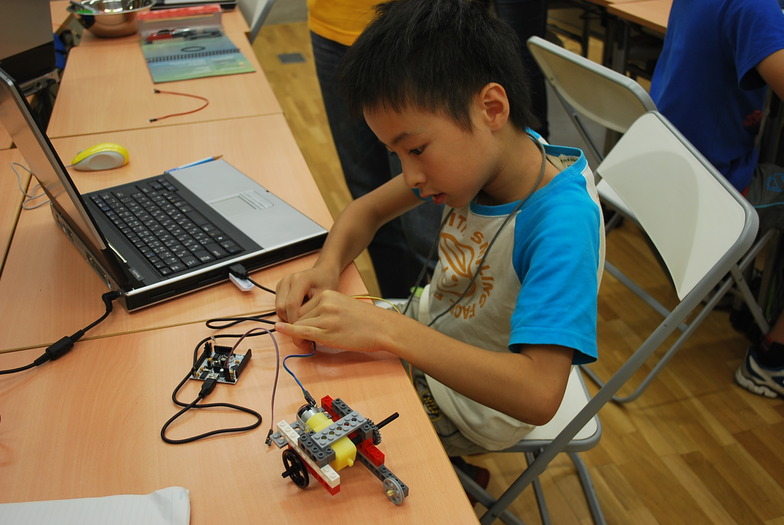
──Does the creativity emerging in the digital age have any distinctive characteristics different from creativity in previous eras?
Ishido: Using digital tools allows us to access information from multiple perspectives on a single event. By hearing the viewpoints of people in various positions around the world, we can cultivate a composite view of a phenomenon and deepen our thinking.
Evaluating creativity is difficult, but at the very least, the overall creative capacity of children who now take creating videos and music for granted is likely being elevated. While digital convenience might cause some human abilities to atrophy, conversely, abilities suited to the digital age—like collaborative creativity or multi-media expression combining video and music—will likely improve. Furthermore, as the base widens, the apex of the pyramid rises too. We might see truly remarkable talents emerge.
Expressing and creating something is, like living itself, an incredibly joyful act, isn't it? I want to provide children with more places to do this as they live their lives.
──Some experts point out that the evolution of artificial intelligence poses a threat to humanity. As digital technology advances, what kind of future society do you think the digital native children will create when they become adults?
Ishido: Since technology is born from human desire, it must also embody human hope. I personally wish to see the potential there. Now that reality has caught up to the future depicted in "Back to the Future," we might find ourselves struggling to imagine the next future.
I doubt today's 60-somethings could have imagined Google or Facebook. I have tremendous expectations for new industries born from the unimaginable imagination of children raised in an environment where digital is part of daily life – industries today's adults couldn't even conceive. I hope to challenge myself to dream alongside today's children, who will support society in 30 to 50 years, and to help shape those dreams into reality.
In a survey asking which country is the most creative in the world, Japan actually ranked first. Shouldn't we Japanese take even greater pride in our creativity, which produces so much content accepted worldwide? As creativity becomes increasingly vital in the global society ahead, I strongly feel Japan's digital native children possess tremendous potential to create something that will astonish the world.

Was this article helpful?
Newsletter registration is here
We select and publish important news every day
For inquiries about this article
Back Numbers

2015/12/20
Is the lack of digital tension causing the internet to lose its way? ──The present state of "netizens" as seen through a manga artist's imagination ~ Manga Artist Motoaki Mase
2015/11/15
"Kyoto's Inspiration Gave Birth to Ingress" — The Developer Speaks on the Essence of Geomedia: Yuji Kawashima, Head of Niantic Asia
Author

Nanako Ishido
CANVAS
President and CEO of Digital Ehon. After graduating from the University of Tokyo's Faculty of Engineering, he served as a visiting researcher at the MIT Media Lab before founding the NPO "CANVAS." Approximately 350,000 children have participated in workshops he has organized to date. He concurrently serves as a member of the Ministry of Internal Affairs and Communications' Information and Communications Council and as a director of the Digital Textbook and Teaching Materials Council. Associate Professor at Keio University. His publications include "Switching On Children's Creativity! CANVAS's Secret Base for Play and Learning" and "Digital Education Manifesto: The Future of Children Who Play and Learn with Smartphones."